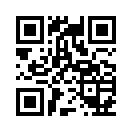What is the AES/EBU signal in professional audio?
What is the AES/EBU input function of audio?
AES/EBU input is a digital audio input interface used to transmit digital audio signals between audio devices. AES/EBU is a standard that stands for Audio Engineering Society/European Broadcasting Union. AES/EBU interfaces usually use XLR connectors and use balanced differential signaling. This kind of interface can be found in professional audio fields, such as audio workstations, digital audio processing equipment, digital mixers, and digital audio recording equipment.
In the AES/EBU input, the digital audio signal is transmitted differentially through two independent wires, carrying the normal phase and reverse phase signals respectively. This transmission method helps reduce interference and improve the anti-interference ability of the signal.
Advantages of audio equipment using the AES/EBU interface:
High-quality digital audio transmission: The AES/EBU interface provides high-quality digital audio transmission, suitable for professional audio production and recording. Through differential signal transmission, it can provide a higher signal-to-noise ratio and lower distortion, allowing the audio signal to maintain high fidelity during transmission.
Anti-interference performance: Using balanced differential transmission, the AES/EBU interface has good anti-interference performance against electromagnetic interference (EMI) and radio frequency interference (RFI). This enables audio signals to be transmitted more reliably in complex electromagnetic environments and reduces the impact of external interference on audio quality.
Standardization and interoperability: The AES/EBU interface is an international standard, which means devices that comply with the standard can connect to each other and users can expect good interoperability between them. This standardization promotes more seamless integration between audio equipment from different manufacturers.
Supports multiple sample rates and resolutions: AES/EBU interfaces typically support multiple sample rates and bit depths, making them suitable for a variety of audio applications, from high-fidelity music recording to professional film production.
Reliability and Stability: The AES/EBU interface is designed to provide reliable digital audio transmission. By using standards recognized by the professional audio industry, this interface delivers stable, consistent performance, reducing the risk of signal interruption and distortion.
Flexibility: The design of the AES/EBU interface allows connections between different audio devices, providing audio system flexibility. This allows users to build multi-channel audio systems while maintaining high-quality digital audio transmission.

Sinbosen product model with AES/EBU input function: LA12X
Sinbosen product models with AES input function: new DSP amplifiers, such as DSP-10Q, DSP-20Q, etc.
Website: http://www.sinbosen.com/
Whatsapp: https://api.whatsapp.com/send?l=en&phone=8613342806188
Facebook: https://www.facebook.com/sinbosenamplifier/
Correg electronico: sales7@sinbosen.com
- Tel:
+86-020-86866877
+86-13342806188
- Email:
- sales7@sinbosen.com
- WhatsApp:
- 8613342806188
- Address:
- BUILDING A XINSHENG TECHNOLOGY PARK YINGBIN AVENUE WEST,XIUQUAN STREET HUADU DISTRICT GUANGZHOU GUANGDONG CHINA
- FP POWER AMPLIFIER
- DSP POWER AMPLIFIER
- 1U 4 ohms DIGITAL AMPLIFIER
- 1U 2 ohms DIGITAL AMPLIFIER
- 2 ohms Digital Amplifier V2.0
- Amplifier Module
- LINE ARRAY SPEAKER
- SUBWOOFER SPEAKER
- Point Source Speaker
- COAXIAL SPEAKER
- MONITOR SPEAKER
- COLUMN SPEAKER
- WIRELESS MICROPHONE SYSTEM
- WIRED MICROPHONE
- AUDIO PROCESSOR
- DRUM MICROPHONE KIT
- ANTENNA AMPLIFIER
- POWER DISTRIBUTOR
- HOT SELLING SET
- ACCESSORIES
sign up for the latest catalogue, new design and promotion


